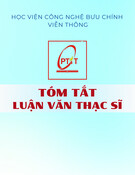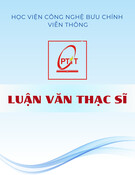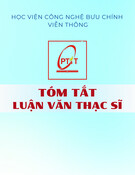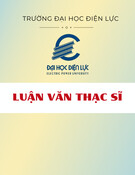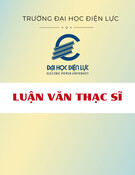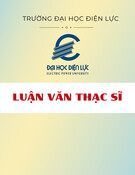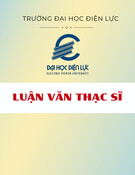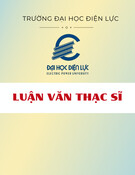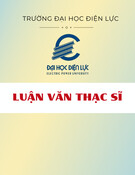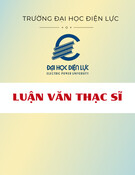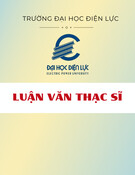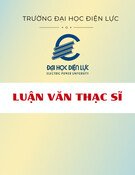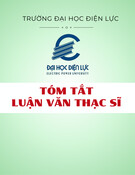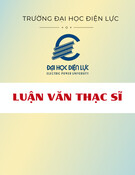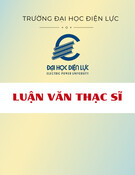
Flexible Human Resource Service Delivery Models in the Australian Public Sector: Implications
for Key Stakeholders
A thesis submitted in fulfilment of the requirements for the degree of Doctor of Philosophy
Dale Maree Clarke
Bachelor Commerce - Griffith University
Bachelor Behavioural Science – Griffith University
Master Human Resource Management – Griffith University
Graduate Diploma Legal Studies – Queensland University of Technology
School of Management
College of Business
RMIT University
30 May 2018

ii
Author’s Declaration
I certify that except where due acknowledgement has been made, the work is that of the author
alone; the work has not been submitted previously, in whole or in part, to qualify for any other
academic award; the content of the thesis is the result of work which has been carried out
since the official commencement date of the approved research program; any editorial work,
paid or unpaid, carried out by a third party is acknowledged; and, ethics procedures and
guidelines have been followed.
I acknowledge the support I have received for my research through the provision of an
Australian Government Research Training Program Scholarship.
Dale Clarke
30 May 2018

iii
Acknowledgement
I would like to express sincere gratitude to my supervisors Dr Alan Montague and Professor
Fang Lee Cooke for the very significant role they have played. Thank you for your guidance,
support, insights and wisdom throughout this research. I am also very appreciative of the
contribution of participants in this study who gave of their time and generously provided their
insights into their experiences of the public sector.
On a personal note, thank you to my friends and family who have encouraged me throughout
this journey. Specifically, to my husband, Greg Bamber, your love and support, good humour
and calming influence made the difference. I could not have achieved this without you!
Finally, I would like to dedicate this thesis to my mother Rayma Clarke who instilled in me a
love of learning and always challenged me to be the best I can be.

iv
Contents
Author’s Declaration ........................................................................................................... ii
Acknowledgement ............................................................................................................. iii
List of Abbreviations .......................................................................................................... x
Abstract .............................................................................................................................. xi
Chapter 1: Introduction .................................................................................................... 13
1.1 Rationale for the study ............................................................................................... 15
1.2 Research questions ................................................................................................... 16
1.3 Theoretical basis ........................................................................................................ 16
1.4 Thesis structure ......................................................................................................... 17
1.5 Significance ............................................................................................................... 20
Chapter 2: Literature Review: Models of HRM and HR Services ................................... 21
2.1 Introduction ................................................................................................................ 21
2.2 Context of organisations ............................................................................................ 22
2.3 Models of HRM .......................................................................................................... 24
2.3.1 The Harvard Model ........................................................................................... 24
2.3.2 Storey’s Typology ............................................................................................. 26
2.3.3 Ulrich’s perspective ........................................................................................... 27
2.3.4 The AHRI Model of Excellence ......................................................................... 32
2.4 Psychological contract ............................................................................................... 33
2.5 Organisational decision to make or buy HRM ............................................................ 35
2.5.1 Transaction cost economics .............................................................................. 36
2.5.2 Resource based view ........................................................................................ 37
2.5.3 Application of TCE and RBV ............................................................................. 38
2.6 HRM architecture ....................................................................................................... 39
2.6.1 Devolution of HRM ............................................................................................ 42
2.7 Outsourcing HRM ...................................................................................................... 44
2.7.1 Outsourcing motives ......................................................................................... 46
2.7.2 What to outsource ............................................................................................. 51
2.7.3 Challenges of outsourcing................................................................................. 54
2.7.4 Managing outsourced relationships ................................................................... 56
2.7.5 Impact of outsourcing on key stakeholder groups ............................................. 59
2.8 Shared services ......................................................................................................... 59
2.8.1 Characteristics of shared services .................................................................... 60
2.8.2 Rationale for adopting shared services ............................................................. 62
2.8.3 Challenges of shared services .......................................................................... 65

v
2.8.4 Managing a shared services relationship .......................................................... 67
2.8.5 Impact of shared services on stakeholder groups ............................................. 68
2.9 Conclusion ................................................................................................................. 69
Chapter 3: Literature review: The public sector context ................................................ 70
3.1 Introduction ................................................................................................................ 70
3.2 Terminology ............................................................................................................... 70
3.3 Differences between the public and private sector ..................................................... 72
3.3.1 Ownership ........................................................................................................ 72
3.3.2 Source of funding .............................................................................................. 72
3.3.3 Control .............................................................................................................. 73
3.4 The role of government .............................................................................................. 74
3.5 Public sector trends ................................................................................................... 75
3.5.1 Public administration ......................................................................................... 76
3.5.2 Public Management .......................................................................................... 79
3.5.3 The third wave .................................................................................................. 85
3.6 The global financial crisis ........................................................................................... 88
3.7 Public sector HRM ..................................................................................................... 89
3.8 Australian Government .............................................................................................. 94
3.9 Australian shared services experiences ..................................................................... 99
3.10 Conclusion ............................................................................................................... 100
Chapter 4: Research design, strategies and data analysis .......................................... 101
4.1 Introduction .............................................................................................................. 101
4.2 Ontological and epistemological foundations ........................................................... 101
4.3 Research propositions - background ........................................................................ 102
4.4 Research design ...................................................................................................... 103
4.5 Research Strategy ................................................................................................... 104
4.5.1 Case study approach ...................................................................................... 104
4.5.2 Selection of cases ........................................................................................... 106
4.6 Analysing data ......................................................................................................... 108
4.7 Research Methods ................................................................................................... 109
4.7.1 Interviews ....................................................................................................... 110
4.7.2 Focus Groups ................................................................................................. 113
4.7.3 Documents ..................................................................................................... 115
4.8 Data analysis ........................................................................................................... 117
4.9 Validation and reliability ........................................................................................... 119
4.10 Ethical considerations .............................................................................................. 119
4.11 Conclusion ............................................................................................................... 120

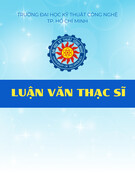
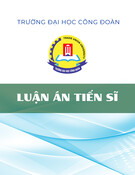

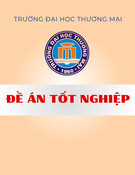


![Đề án Thạc sĩ: Đào tạo và phát triển nguồn nhân lực Viettel tại Đắk Lắk [mới nhất]](https://cdn.tailieu.vn/images/document/thumbnail/2025/20250710/rocky_06/135x160/89351752116141.jpg)



